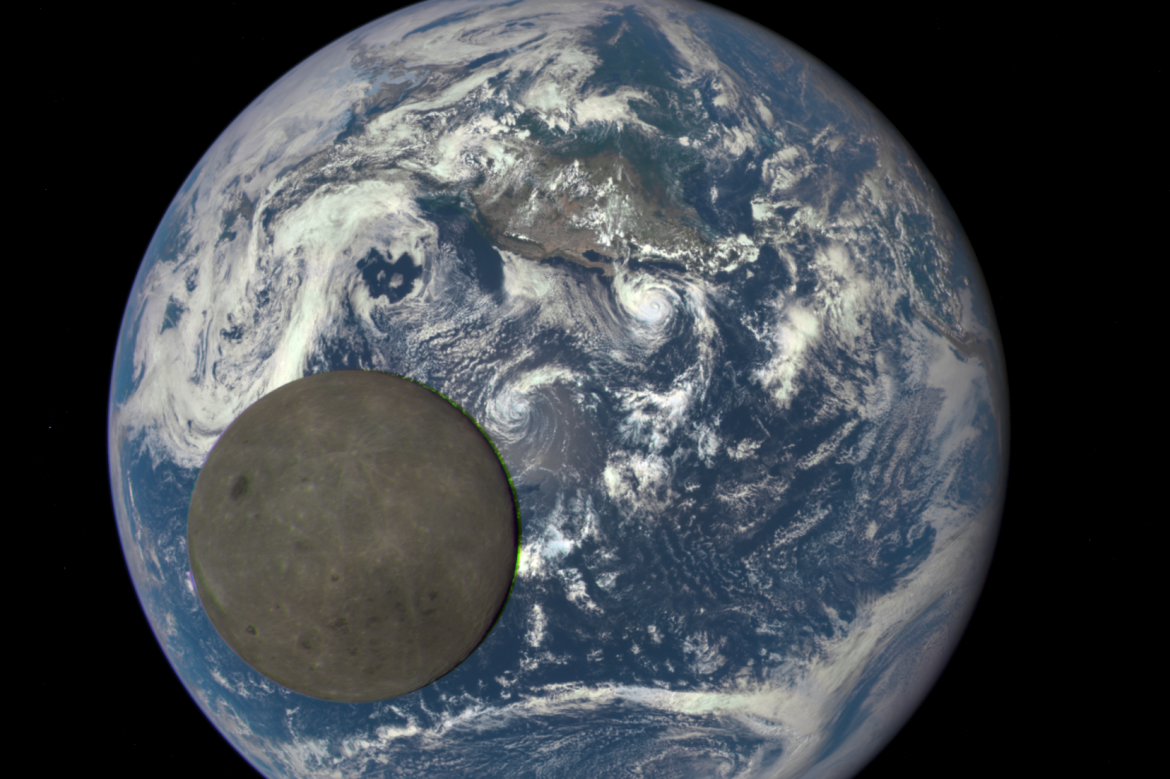Moon imaged traversing Earth
NASA’ “space weather” satellite DSCOVR placed on a stationary point some 1.5 million kilometers from the Earth, imaged the Moon traversing the face of the planet. The imaged side, illuminated by the Sun, is the “dark side of the Moon”. As the name suggests, it cannot be viewed from the Earth, since the Moon is tidally locked to the planet that is its orbital and rotational periods have equalized. Therefore we can only see the accustomed “granpa” face of the moon.
The average distance of the Moon to Earth is some 400,000 kilometers. Since DSCOVR is on a tight orbit around one of the five Lagrange points 1.5 million kilometers away where the gravitational tugs of the Sun, Earth and the Moon cancel out each other, it can see side facing away from us (see: https://kurious.ku.edu.tr/en/wide-angle/earth-blue-splendor).
As can be seen from the image, the distinctive feature of the far side is “its lack of distinctive features” such as basaltic “maria”, the large dark lowlands and large craters pockmarking the visible face. Only features which catch the eye are Mare Moscoviense on upper left and the Tsiolkovskiy crater on lower left.
In the images taken in true colors, the Earth appears much brighter and blue, partly due to the short wavelength of the blue light which causes it to scatter more in the Earth’s atmosphere.
For the video http://www.nasa.gov/sites/default/files/thumbnails/image/dscovrepicmoontransitfull.gif
REFERENCES
- 1. “Froma a Million Miles Away, NASA Camera Shows Moon Crossing Face of Earth”, NASA, 5 August 2015

